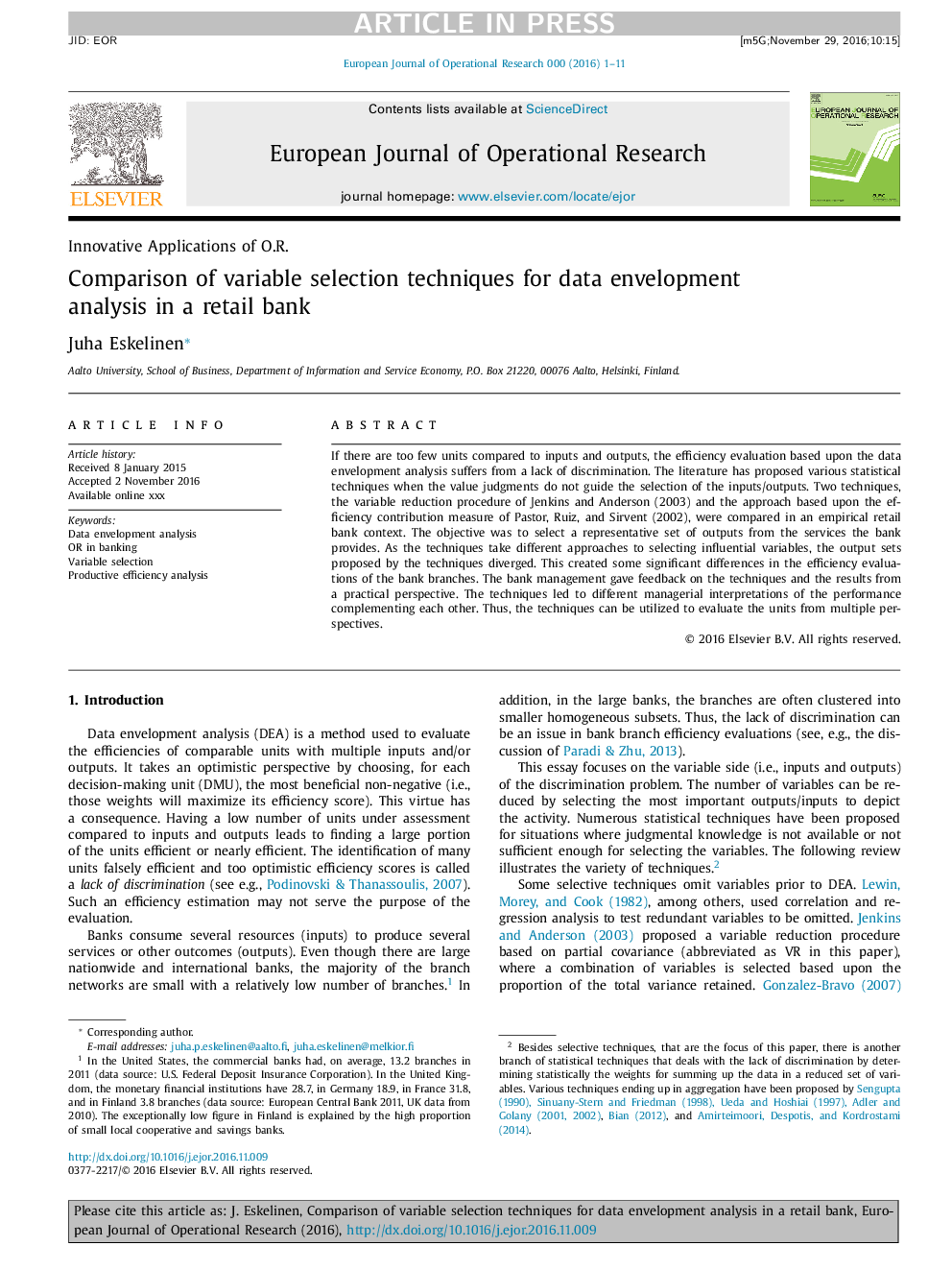| Article ID | Journal | Published Year | Pages | File Type |
|---|---|---|---|---|
| 4960207 | European Journal of Operational Research | 2017 | 11 Pages |
Abstract
If there are too few units compared to inputs and outputs, the efficiency evaluation based upon the data envelopment analysis suffers from a lack of discrimination. The literature has proposed various statistical techniques when the value judgments do not guide the selection of the inputs/outputs. Two techniques, the variable reduction procedure of Jenkins and Anderson (2003) and the approach based upon the efficiency contribution measure of Pastor, Ruiz, and Sirvent (2002), were compared in an empirical retail bank context. The objective was to select a representative set of outputs from the services the bank provides. As the techniques take different approaches to selecting influential variables, the output sets proposed by the techniques diverged. This created some significant differences in the efficiency evaluations of the bank branches. The bank management gave feedback on the techniques and the results from a practical perspective. The techniques led to different managerial interpretations of the performance complementing each other. Thus, the techniques can be utilized to evaluate the units from multiple perspectives.
Related Topics
Physical Sciences and Engineering
Computer Science
Computer Science (General)
Authors
Juha Eskelinen,
